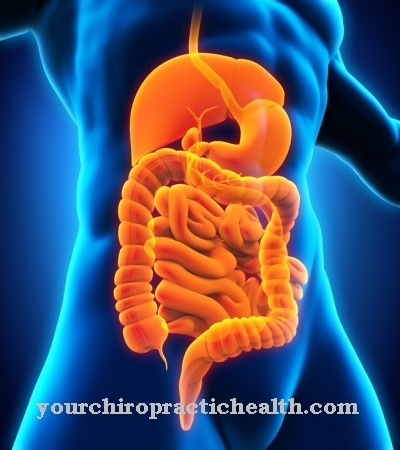A Manometry is a medical examination method that is used to clarify various complaints in the digestive tract. By inserting a plastic catheter, the pressure conditions in the respective organ can be determined and conclusions can be drawn about any functional disorders of the muscles. The examination can take place on an outpatient basis and is comparatively low-risk if carried out correctly.
What is manometry?

Doctors understand a manometry to be a gastroenterological examination method. This involves inserting a thin catheter into the esophagus or rectum, for example. The catheter has several capillaries that are able to measure the pressure in the organ in question. In this way, functional disorders of the muscles can be recognized.
The examination is used for symptoms such as dysmotility of the stomach and intestines, difficulty swallowing, fecal incontinence and constipation, as well as for reflux disease. Due to the variety of symptoms and organs, medical professionals distinguish three types of manometry: rectum manometry for examining the sphincter and rectum, small intestine manometry and esophageal manometry for examining the esophagus.
The examination takes between 15 and 30 minutes, depending on the area of application. During small intestinal manometry, a recording device that remains in the body for 24 hours can be inserted in order to obtain a particularly precise insight into the function of the organ. If there are no unforeseen complications, the manometry is carried out on an outpatient basis so that the patient can then leave the clinic.
Function, effect & goals
If a patient visits his doctor with chronic constipation, persistent heartburn, difficulty swallowing or general digestive problems, the doctor will order appropriate examinations in addition to a detailed discussion. Usually an endoscopy of the esophagus, stomach or intestines is performed first.
This can recognize or rule out pathological changes in the organs. An X-ray examination with the addition of a contrast agent can also provide information. If these measures do not deliver clear results, there may be a disorder of the muscle reflex or the pressure conditions. This leads to stomach acid rising up into the esophagus or problems with bowel movements. Manometry is used as an additional gastroenterological examination to confirm or reject this diagnosis.
The esophageal manometry is performed while sitting. The patient must have fasted for approximately four hours beforehand. The catheter is inserted through his nose and into the esophagus. Once the probe has been positioned, he lies down and the measurement of the resting pressure in the esophagus can be made. The examination takes about 30 minutes. If the rectum or the sphincter muscle is to be examined, the patient is given an enema about half an hour in advance.
The catheter is then inserted into the rectum and the pressure is measured. The process ends after just under 15 minutes. Small intestine manometry is the most complex examination. The patient must previously fasted for 15 hours. The probe is inserted through the nose and down into the small intestine. It may be necessary to do a gastroscopy beforehand. Measurements are carried out repeatedly over a period of four hours. The patient then receives a test meal; then it is measured again.
During the examination, the attending physician looks at the monitor, on which the pressure conditions are displayed in the form of curves. From this he can read disturbances and impairments. A continuous measurement over a period of 24 hours is also possible if required. After a manometry, the patient remains in the clinic for a short observation period and can then be discharged home. If a disorder of the muscle reflexes or the pressure in the affected organ is detected, the doctor can make a definitive diagnosis and begin appropriate therapy.
How this turns out depends on the organ affected and the type of disorder. If, for example, there is a reflux disease, this can be remedied by a change in living conditions or, in severe cases, surgically. Treatment methods for sphincter weakness range from medication and pelvic floor exercises to surgical intervention. It is similar with constipation (chronic constipation).
Risks, side effects & dangers
Manometry is a comparatively low-risk examination method that can be carried out independently of the patient's other state of health. Since no anesthesia is required, it only puts a little strain on the body. The examination is carried out professionally and by trained personnel. Because of this, most patients do not experience any unpleasant side effects or consequences.
Under certain circumstances, esophageal manometry or small intestinal manometry can lead to temporary irritation of the throat and a slight gag reflex, which, however, quickly subsides when the manometry is ended. Increased saliva flow can cause the patient to choke; However, this can be prevented by breathing calmly and, if necessary, sucking off the saliva. Examining the rectum may cause a foreign body irritation and a temporary feeling of pressure. Proper insertion and removal of the probe, however, does not cause pain.
During the examination, the patient should make sure to sit or lie still and follow the instructions of the medical staff. Careless movements can lead to the probe slipping, which can damage the organ walls. An extensive discussion between doctor and patient beforehand and detailed information about the manometry can prevent possible risks.














.jpg)













